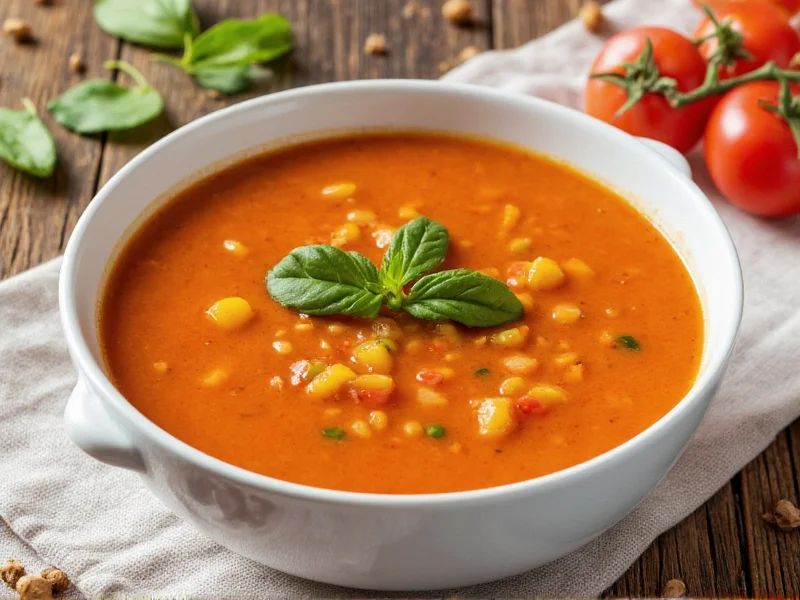Understanding the Meaning and Significance of La Soupe
When searching for “la soupe,” users encounter two primary interpretations: the literal French translation for “the soup” and specific organizations bearing this name. In French culinary tradition, soup represents far more than sustenance—it’s a cultural institution with deep historical roots. Meanwhile, establishments like La Soupe Cincinnati have redefined this concept through community-focused food initiatives.
The Rich Heritage of French Soup Culture
Soup has been central to French cuisine since medieval times, evolving from humble peasant fare to sophisticated culinary art. Traditional French households often begin meals with soupe maison (homemade soup), reflecting the nation’s commitment to fresh, seasonal ingredients. Classic preparations like soupe à l’oignon (onion soup), potage parmentier (potato leek soup), and bisque de homard (lobster bisque) demonstrate regional diversity within French soup traditions.
French culinary schools emphasize soup-making as foundational training, teaching students about flavor layering, stock preparation, and seasonal adaptation. This expertise transforms simple ingredients into complex, nourishing dishes that embody terroir—the unique characteristics imparted by local environment and tradition.
La Soupe Cincinnati: A Modern Interpretation
Among contemporary establishments using this name, La Soupe Cincinnati stands out as a nonprofit organization addressing food insecurity through culinary innovation. Founded in 2012, this community kitchen operates on a unique model:
| Aspect | Details |
|---|---|
| Food Sourcing | Rescues surplus produce from farms, markets, and restaurants |
| Production | Prepares 10,000+ meals weekly using professional culinary techniques |
| Distribution | Serves meals through community partners including shelters and schools |
| Sustainability | Diverts 500,000+ pounds of food from landfills annually |
This Cincinnati-based organization exemplifies how traditional soup-making principles can address modern challenges. Their chefs apply French culinary techniques to transform imperfect or surplus produce into restaurant-quality meals, demonstrating that la soupe remains relevant beyond its historical context.
Traditional French Soup Varieties Worth Knowing
Understanding authentic French soup varieties enhances appreciation for this culinary cornerstone. Key categories include:
- Potages - Hearty vegetable-based soups often served as first course
- Veloutés - Smooth soups thickened with roux, typically featuring poultry or fish
- Bisques - Creamy shellfish soups requiring careful shell reduction
- Consommés - Clarified broths showcasing precise technique
- Soupe à l’oignon - Iconic caramelized onion soup with melted cheese topping
Each variety follows specific preparation methods passed through generations. Authentic French soup recipes emphasize building flavors gradually rather than relying on shortcuts—a philosophy increasingly relevant in today’s focus on sustainable cooking practices.
The Enduring Cultural Significance of Soup
Soup’s universal appeal transcends cultural boundaries while maintaining distinctive regional identities. In France, the daily ritual of soup preparation reflects broader cultural values: respect for ingredients, patience in preparation, and communal sharing. This tradition has influenced global culinary practices while adapting to contemporary concerns about food waste and nutrition.
Modern interpretations of la soupe demonstrate remarkable versatility—from Michelin-starred restaurants featuring innovative soup courses to community kitchens addressing food insecurity. This evolution shows how culinary traditions can remain vital by addressing current needs while honoring foundational principles.
Creating Meaningful Soup Experiences Today
Whether exploring traditional French soup recipes or supporting community initiatives, engaging with la soupe offers multiple pathways to meaningful culinary experiences. Home cooks can adopt French techniques by:
- Starting with quality homemade stock as soup foundation
- Layering flavors through careful sautéing and simmering
- Using seasonal produce to create rotating menu offerings
- Preserving leftovers through proper storage and repurposing
For those interested in the social impact dimension, supporting organizations like La Soupe Cincinnati provides tangible connection to this culinary tradition’s modern evolution. Many communities now host similar initiatives that transform surplus food into nourishing meals while reducing environmental impact.
Frequently Asked Questions
What does la soupe mean in English?
La soupe translates directly to “the soup” in English. In French culinary context, it refers to any soup preparation, from simple vegetable broths to complex bisques and consommés that form the foundation of French cuisine.
Is La Soupe Cincinnati a French restaurant?
No, La Soupe Cincinnati is not a traditional French restaurant. It's a nonprofit community kitchen in Cincinnati, Ohio that uses French culinary techniques to prepare meals from surplus food. While inspired by French soup-making traditions, its primary mission focuses on food rescue, community service, and sustainability rather than authentic French dining.
What are traditional French soup recipes to try at home?
Authentic French soup recipes worth trying include soupe à l'oignon (French onion soup with melted gruyère cheese), potage parmentier (creamy potato leek soup), velouté de volaille (chicken velouté), and soupe au pistou (Provençal vegetable soup with basil pesto). Traditional preparations emphasize homemade stock, gradual flavor development, and seasonal ingredients rather than shortcuts.
How does La Soupe Cincinnati operate sustainably?
La Soupe Cincinnati operates sustainably by rescuing surplus produce that would otherwise go to waste from farms, grocery stores, and restaurants. Their professional chefs transform this imperfect or excess food into high-quality meals using French culinary techniques. This model diverts hundreds of thousands of pounds of food from landfills annually while providing nourishing meals to community members in need through established distribution channels.
What makes French soup different from other cuisines?
French soup traditions emphasize technique, balance, and respect for ingredients. Unlike some cuisines that treat soup as an afterthought, French culinary tradition considers soup a fundamental course requiring precise stock preparation, careful flavor layering, and attention to texture. French soup recipes typically avoid heavy cream bases in favor of natural thickeners and rely on mirepoix (celery, carrots, onions) as flavor foundations. The French approach values simplicity with high-quality ingredients rather than complex ingredient lists.











 浙公网安备
33010002000092号
浙公网安备
33010002000092号 浙B2-20120091-4
浙B2-20120091-4